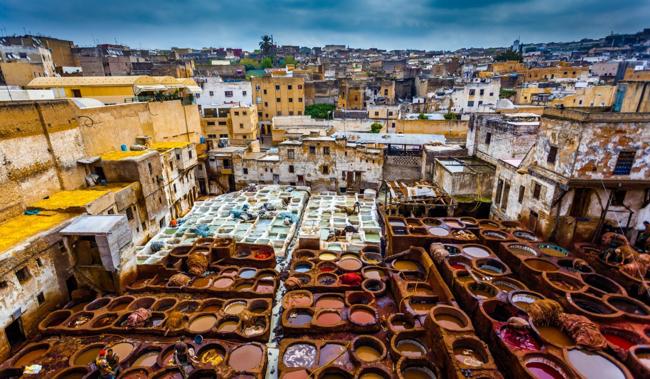Fez is the oldest of Morocco’s imperial cities and has served as the country’s capital no fewer than three times throughout its history.
It was founded in 789 by the first sultan of the Idrisid dynasty, although many of its most famous landmarks date back to the 13th and 14th centuries, when the city reached the height of its influence during the rule of the Marinids.
Today, it is one of the most authentic cities in Morocco, known around the world as a center for traditional artists and artisans. Fez is divided into three sections - the original old town, Fes el-Bali; Fes el-Jedid, built to accommodate the city’s expanding population in the 13th century; and the contemporary Ville Nouvelle quarter.
Here are eight of the best things to do and see on your trip to this fascinating city.
Fez’s old town, or medina, is a UNESCO World Heritage Site recognized as one of the best preserved historic towns of the Arab-Muslim world. It is also one of the world’s largest urban pedestrian zones, comprising a maze-like tapestry of narrow streets, bustling squares and souks lined with shops whose interiors resemble Aladdin’s cave. Stop to sample traditional foods, or to haggle with workshop owners for colorful pottery and intricate lamps. Keep an eye out for the donkey carts that ply the medina’s streets, and for architectural landmarks dotted in between the shops and alleyways. The best way to explore is to simply get lost.
Fez’s old town, or medina, is a UNESCO World Heritage Site recognized as one of the best preserved historic towns of the Arab-Muslim world. It is also one of the world’s largest urban pedestrian zones, comprising a maze-like tapestry of narrow streets, bustling squares and souks lined with shops whose interiors resemble Aladdin’s cave. Stop to sample traditional foods, or to haggle with workshop owners for colorful pottery and intricate lamps. Keep an eye out for the donkey carts that ply the medina’s streets, and for architectural landmarks dotted in between the shops and alleyways. The best way to explore is to simply get lost.








